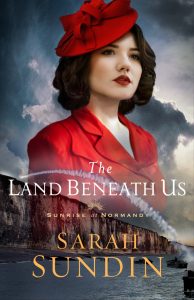Sarah Sundin, @sarahsundin
Ever had one of your characters shake someone’s hand—but a few sentences earlier he was carrying a huge box? Ever had a scene filled with cute banter—but nothing happens?

We’ve all done something similar. One time I almost set a side character’s hair on fire when he scratched his head—I forgot he had a cigarette in hand (sorry about that, FBI guy).
Sketching scenes is a useful exercise to prevent these errors, but more importantly, to help us flesh out a scene to fully engage a reader. A pantser will probably consider these factors when editing. As an extreme outliner, I sketch scenes before I write the rough draft of each chapter. I even have a form I fill out for each scene! I told you I was extreme.
So what questions should we ask ourselves when sketching?
Who?
Who is the point-of-view character? Make this clear within the first few lines of a new scene. Also, which characters will your hero or heroine interact with? Remember “extras”—people on the street, in the bookstore, at the coffee shop, who make the scene feel real and lively.
Where?
Where exactly does the scene take place? Our readers need to be grounded. They need to know where they are within the first few paragraphs.
If there’s movement in the scene, where do your characters go? Also consider what the characters are wearing, including outerwear, hats, shoes, hairstyles, etc.
What about “stage props”? Trees, furniture, roots to trip over? Is the character carrying anything or does she pick anything up—purses, boxes, a flower?
Don’t forget background noises, smells, cars in the street, and other sensory details to bring out the sense of place.
When?
Early in the scene, you need to establish a sense of season or date and time of day.
Even if you don’t use a “timestamp” at the beginning of your chapter, you should know the date when the scene takes place. Some writers don’t like to get specific, but you should at least know the season and how much time has passed since the last scene.
Don’t forget the weather—this can quickly show season or time passing. I love to look up historical weather data. An unseasonal cold snap—I can use that!
Why?
What are your character’s objectives and motivations heading into the scene? Does she find new objectives based on something you throw at her? Does this tie in to her main story objective? Each scene, even a quiet processing scene, needs to either develop the character or move the story forward.
Why Not?
Ah, conflict. We hate it in real life. We crave it in fiction. What stands in the way of your character’s scene and story objectives? How do you challenge his motivation, his flaws, and his fears? All scenes, even happy ones, need conflict—a moment of doubt or frustration, a memory of past hurts, a weird conversation with her mother.
What?
What things need to happen in your scene? I scribble these in bullet points—not just the action, but the crucial conversations, internal stuff, and bits of backstory.
Here are my scribbled notes for the first scene in my latest novel, The Land Beneath Us:
-Clay runs obstacle course, foxhole reminds him of dream of his own death
-Clay helps his buddies
-Racist soldier calls Clay a “half-breed”; Clay thinks his half brothers looked down on him; Clay’s “in a pit”
-Why he chose to join Rangers
-Racist soldier falls and breaks his leg
-Clay gives first aid; reminds him of accident two years ago
-Officer tries to recruit him to be medic; Clay conceals medical training; “Time to heal, time to kill—not my healing time.”
How?
My bullet points appear in the order they do in the final scene. But on my scratch paper, you’d see arrows and circles and cross-outs as I figure out the flow of the scene, how I can connect the bits, how I can use action and scenery and dialogue and thought to progress to the next bit.
And Go!
Now you have all you need to give your scene a sense of time and place and population. You know why your character is there, what she wants to accomplish, and what stands in her way. And you have a sketch showing you the flow to bring this all together in a logical but compelling way.
Go write that scene!
In 1943, Private Clay Paxton trains hard with the US Army Rangers at Camp Forrest, Tennessee, determined to do his best in the upcoming Allied invasion of France. With his future stolen by his brothers’ betrayal, Clay has only one thing to live for—fulfilling the recurring dream of his death.
Leah Jones works as a librarian at Camp Forrest, longing to rise above her orphanage upbringing and belong to the community, even as she uses her spare time to search for her real family—the baby sisters she was separated from so long ago.
After Clay saves Leah’s life from a brutal attack, he saves her virtue with a marriage of convenience. When he ships out to train in England for D-day, their letters bind them together over the distance. But can a love strong enough to overcome death grow between them before Clay’s recurring dream comes true?
Sarah Sundin is an ECPA- and CBA-bestselling author of World War II novels, including The Land Beneath Us, The Sky Above Us, and The Sea Before Us. Her novel The Sky Above Us is a 2020 Carol Award finalist, The Sea Before Us received the 2019 Readers Choice Award from Faith, Hope, and Love, When Tides Turn and Through Waters Deep were named to Booklist’s “101 Best Romance Novels of the Last 10 Years,” and Through Waters Deep won the 2016 INSPY Award.
A mother of three adult children, Sarah lives in northern California and enjoys speaking for church, community, and writers’ groups. She serves as Co-Director for the West Coast Christian Writers Conference. You can find her at http://www.sarahsundin.com


